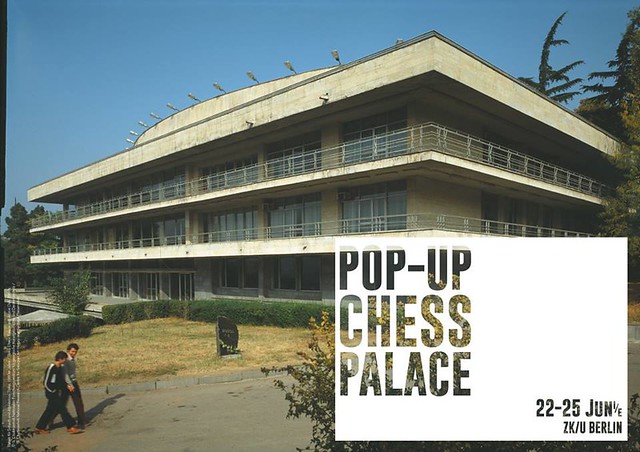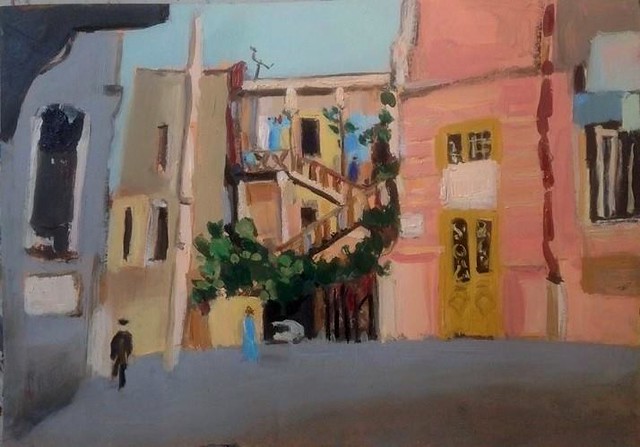Keto, meine Mutter, war 22 Jahre alt, als sie in einem Bergdorf geheiratet hatte, wo ich und mein Bruder geboren wurden. Sie war nicht streng, aber sie liebte auch nicht wie eine Mutter. Nachdem ich die Schule beendet hatte, zog ich in die Hauptstadt Tbilisi, um weiter zu studieren. In dieser Zeit starb mein Vater. Nach dem Abitur blieb ich in der Stadt. Meine Mutter gab mir diese Freiheit, aber gleichzeitig hatte sie aber auch kein Interesse an meinem Leben dort. Aus diesem Grund war ich lange Zeit sehr zornig. Jedes Mal, wenn ich nach Hause kam, zurück in das Dorf, wo ich aufgewachsen war und welches ich immer wieder vermisst habe, konnte ich sehen, dass niemand auf mich wartete - ich war ein Fremder dort. Langsam entstand ein Abgrund zwischen uns und wir wurden uns fremd. Es dauerte Jahre, um diese Vergänglichkeit zu überwinden und diese Realität zu akzeptieren.
Es dauerte Jahre, um zu verstehen, dass wir in vielerlei Hinsicht ähnlich sind. Ich weiß, dass jetzt, nach so vielen Jahren, meine Mutter denkt, dass ich auch eine gleichgültige Tochter war. Und ich kann ihr nicht sagen, wie sehr ich sie immer liebte, wie ich sie immer wollte, dass sie glücklich war und wie ich immer wollte, dass ich jemanden war, den sie liebte. Ich wollte dieses Buch über meine Mutter machen. Aber am Ende erkannte ich, dass dieses Buch über uns ist, über mich und meine Mutter.
 |
| Book of my Mother © Natela Grigalashvili |
Natela Grigalashvili wurde in Khashuri, Georgia geboren. Ihr Kindheitstraum war Kamerafrau zu werden, aber die Fotografie erwies sich als das Medium, die einem Künstler mehr Komfort verlieh. Die Künstlerin wurde in verschiedenen Studios zur Fotografie hingeführt und wurde als Fotograf selbständig. Seit den 1990er Jahren beteiligt sich Grigalaschwili an verschiedenen Ausstellungen und Kunstprojekten. Sie arbeitete als Fotoreporter sowie als Filmoperator. Grigalashvili erhielt den Alexander Roinishvili-Preis für ihren Beitrag zur georgischen Fotografie im Jahr 2007. Ihr Foto "Der Sohn eines Fischer" wurde von National Georgraphic im Jahr 2013 ausgewählt. In den 1990er Jahren fotografierte sie mit schwarz-weiß Filmen. In den letzten 10 Jahren hat Grigalashvili Farbfotos mit einer Digitalkamera aufgenommen. Die Künstlerin macht hauptsächlich Fotoserien und realisiert Langzeitprojekte. Während der Arbeit an einer Foto-Serie konzentriert sich Grigalashvili auf die Geschichte, die von dem Bild erzählt wird ... Die berühmten Serien sind: Georgian Village, Javakheti, die Dukhobors, Aserbaidschaner in Georgien, Tiermarkt, Traditionelle Feiertage, Pankisi Gorge. Grigalashvili lebt und arbeitet in Tiflis. Sie unterrichtet Fotografie an der Staatlichen Akademie der Künste von Tbilisi und an der Tbilisi State University. Die Künstlerin arbeitet permanent an Fotoprojekten und reist in verschiedenen Regionen Georgiens. Grigalashvili gründete die Schulen in Javakheti (2014) und in der Pankisi-Schlucht (2015).
Webseite: www.natelagrigalashvili.com
Original Source with more photographies in English here: photogrvphy.com






















